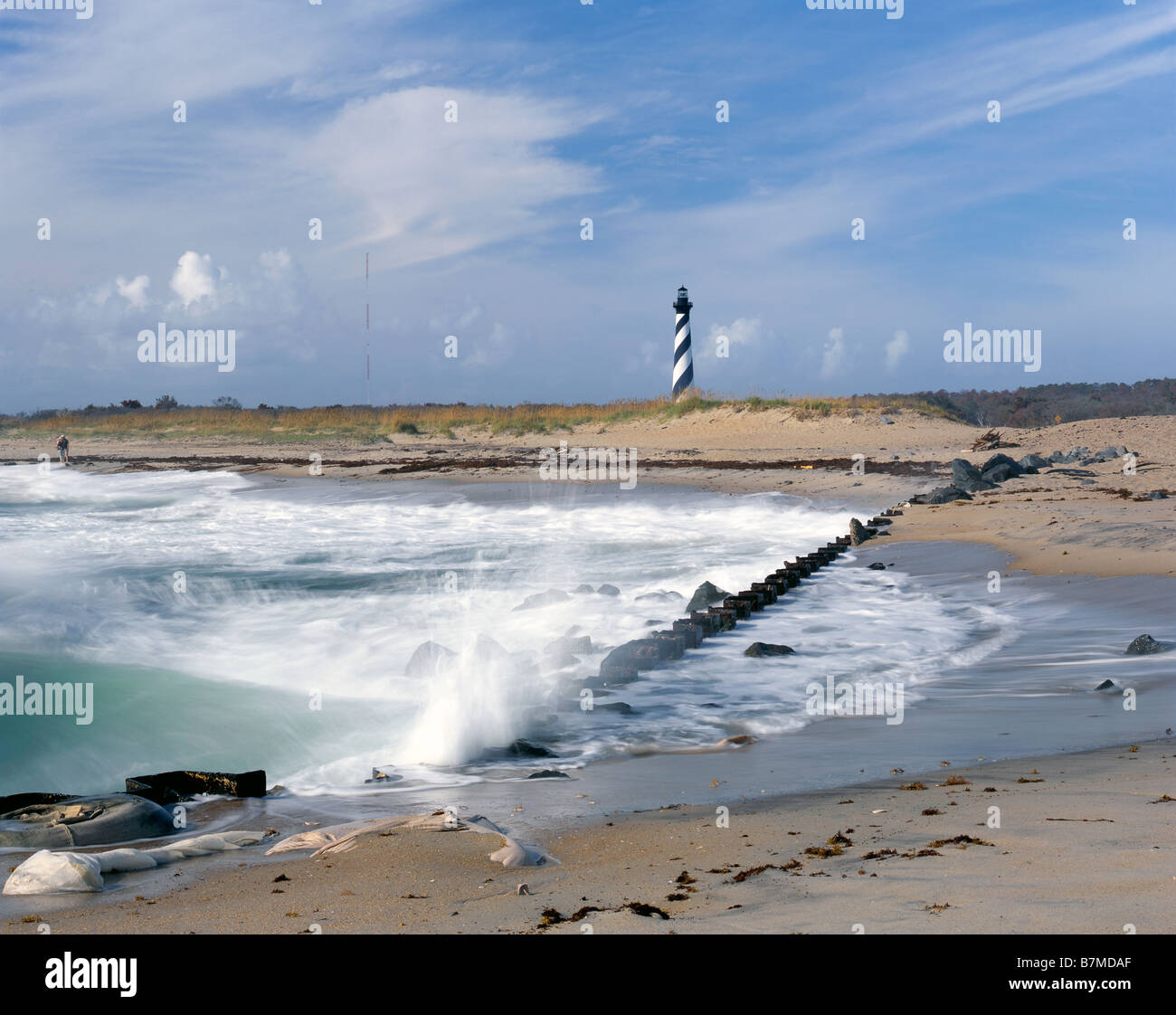
Confederate troops began massing on the island, and if their numbers swelled sufficiently, they could cross the sound to recapture Hatteras Island and regain Pamlico Sound. Roanoke Island remained a Confederate outpost and was the only thing standing in the way of Union control of the Albemarle Sound, which along with Pamlico Sound, would mean total Union dominance of eastern North Carolina. Union encampment at the Cape Hatteras Lighthouse The Chicamacomico Races Pamlico Sound and its major cities of New Bern and Washington, N.C., were the first step, but the Union had its sights on bigger prey. With the breakthrough at Hatteras Inlet, nearly all of the Confederate-held East Coast between Wilmington, N.C., and Norfolk, Va., would begin to crumble. This victory was so important that news was dispatched to the White House, where President Abraham Lincoln, roused from bed in the middle of the night to receive the news, danced a jig in his nightshirt. The taking of Hatteras Inlet was a morale boost for the Union and marked its first victory in the war. After hours of intense shelling, the Confederate commander surrendered the fort and its 700 men. A small contingent of Union soldiers landed and took Fort Clark.Īt dawn Union ships began bombardment of Fort Hatteras. By midday the poorly equipped Confederate troops at Fort Clark abandoned their stations and fled to Fort Hatteras. The great Union ships with their long guns remained far out to sea, well beyond the range of the Confederates’ feeble artillery. On August 28, 1861, seven Federal ships opened fire on Fort Clark. The taking of Hatteras Inlet was an early priority for Union forces. After North Carolina joined the Confederacy in 1861, soldiers and enslaved people constructed Forts Clark and Hatteras, at the southern end of Hatteras Island in an effort to control access into Pamlico Sound. In the 1860s Hatteras Inlet, between Hatteras and Ocracoke islands, was the most traveled and most vulnerable inlet on the Outer Banks. Source: Wikipedia, visitnc.Shelling of Fort Hatteras The Battle of Hatteras Inlet Location: 101 Light House Wynd, Bald Head Island, NC 28461 It is the second of three lighthouses that have been built on Bald Head Island since the 19th century to help guide ships past the dangerous shoals at the mouth of the Cape Fear river.

Known as Old Baldy, this lighthouse is the oldest lighthouse still standing in North Carolina. Location: 800 Island Rd, Harkers Island, NC 28531 It is one of the very few lighthouses that operate during the day. It flashes every 15 seconds and is visible at least 12 miles out to sea and up to 19 miles. The Cape Lookout Lighthouse is located on the Southern Outer Banks of North Carolina. The lighthouse once stood in Albemarle Sound at the mouth of the Roanoke River, across the Sound from its current location. This historic, decommissioned lighthouse, is located on the waterfront of Edenton, North Carolina. Location: 360 Lighthouse Rd, Ocracoke, NC 27960 The lighthouse was built to help guide ships through Ocracoke Inlet into Pamlico Sound. Its diameter narrows from 25 feet at the base to 12 feet at its peak. This lighthouse was built in Hyde County, on Ocracoke Island, North Carolina by Massachusetts builder Noah Porter. Location: 300a Caswell Beach Rd, Oak Island, NC 28465 It sits next to the Oak Island Coast Guard Station on the east end of Oak Island in Brunswick County looking south out at the Atlantic Ocean. This lighthouse is located in the Town of Caswell Beach near the mouth of the Cape Fear River in Southeastern North Carolina. Location: 46379 Lighthouse Rd, Buxton, NC 27920 The Outer Banks are a group of barrier islands on the North Carolina coast that separate the Atlantic Ocean from the coastal sounds and inlets. This lighthouse is located on Hatteras Island in the Outer Banks in the town of Buxton, North Carolina and is part of the Cape Hatteras National Seashore. Location: 8210 Bodie Island Lighthouse, Nags Head, NC 27959 It is located on the Roanoke Sound side of the first island that is part of the Cape Hatteras National Seashore. The current Lighthouse is the third that has stood in this vicinity of Bodie Island on the Outer Banks in North Carolina. Location: 1101 Corolla Village Rd, Corolla, NC 27927

The Currituck Beach Light was added to the National Register of Historic Places on October 15, 1973.

This lighthouse is located on the Outer Banks in Corolla, North Carolina. Plus, National lighthouse day is August 7th so you can really dive into the holiday.Įach lighthouse may have varying visiting hours, so please contact each one to obtain the most up to date information.

If you are looking for a fun, historical trip, visiting the lighthouses of North Carolina may be for you. Calling all Lighthouse Lovers to the Outer Banks.


 0 kommentar(er)
0 kommentar(er)
